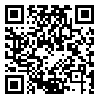Volume 16, Issue 6 (8-2016)
Modares Mechanical Engineering 2016, 16(6): 387-386 |
Back to browse issues page
Download citation:
BibTeX | RIS | EndNote | Medlars | ProCite | Reference Manager | RefWorks
Send citation to:



BibTeX | RIS | EndNote | Medlars | ProCite | Reference Manager | RefWorks
Send citation to:
Pasandi V, Naraghi M, Rezaei S M, Zareinejad M, Baghestan K. Design of A Nonlinear Bilateral Teleoperation System coupled with non-passive Environments. Modares Mechanical Engineering 2016; 16 (6) :387-386
URL: http://mme.modares.ac.ir/article-15-7783-en.html
URL: http://mme.modares.ac.ir/article-15-7783-en.html
Abstract: (4226 Views)
Stability and transparency are both very important conditions in bilateral teleoperation systems. For the design of such systems, different methods have been suggested. Among the approaches presented, passivity framework is widely utilized in which human and environment is considered passive. The operator does not make the closed-loop system unstable. In addition, it is passive against an external input. Thus the adoption of this assumption is correct for the human. Nevertheless it is a conservative presumption for the environment and according to some modern applications of teleoperation systems such as cardiac surgery, it is absolutely not acceptable. In this paper a novel control structure for nonlinear bilateral teleoperation systems interacting with active environments is addressed. In this approach, first a criterion for measuring activity of the environment is presented. Then by developing a PD controller, an algorithm that guarantees master-slave position coordination and static force reflection is introduced. The overall stability of closed loop system is proved using passivity concept and Lyapunov-Krasovskii technique. Simulations are performed to verify the performance of the proposed bilateral teleoperation systems in contact with passive and non-passive environments. Experimental results were carried out to validate the theoretical consequences.
Keywords: Bilateral teleoperation, Active Environment, Passivity, stability, Proportional-Derivative (PD) control
Article Type: Research Article |
Subject:
robatic
Received: 2016/01/14 | Accepted: 2016/05/3 | Published: 2016/07/13
Received: 2016/01/14 | Accepted: 2016/05/3 | Published: 2016/07/13
| Rights and permissions | |
 |
This work is licensed under a Creative Commons Attribution-NonCommercial 4.0 International License. |







